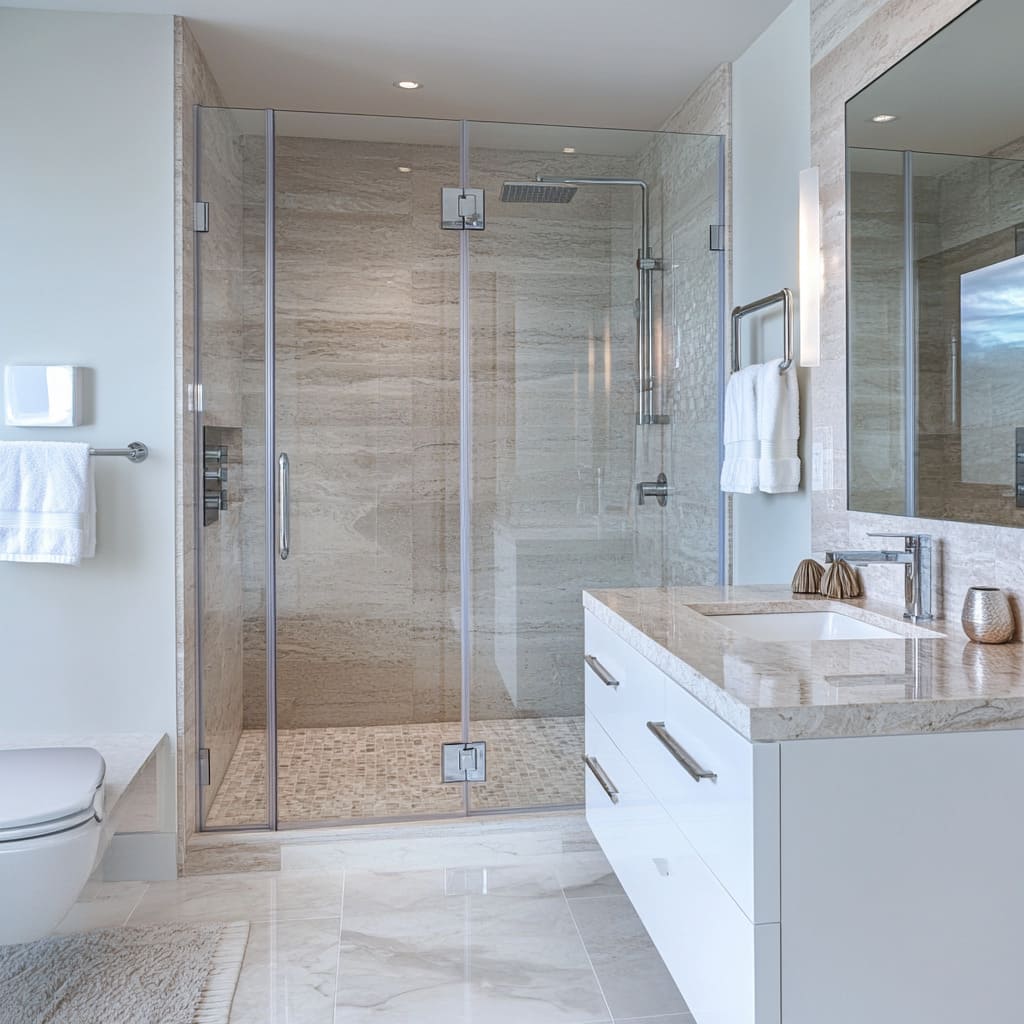Water damage is a homeowner’s worst nightmare and the remediation job can be complex. You need accurate information and practical steps for water damage restoration, as every minute counts when it comes to mitigating the damage.
Water Damage Specialist brings competent insights tailored just for you, providing solutions rooted in expertise. Their dedicated professionals help you salvage your property ensuring both safety and cost-effectiveness.
Appropriate preparation, prompt response, and expert guidance are stakeholders in a successful restoration process. Stay informed and get ready to tackle the water damage crisis in your home confidently
Identifying Water Damage
Start by inspecting your roof from the ground. Identify any missing, damaged, or curled shingles.
Also, pay attention to loose or missing flashing. Examine your gutters and downspouts.
Look for signs of debris, rust, or cracks that could obstruct water flow and lead to potential water damage. Perform an interior inspection.
Check your ceiling and walls for disappearing coloration or water stains, which signal potential water damage
- Inspect the attic for gaps: The presence of daylight through the roof indicates holes or gaps. Insulation with traces of moisture or mold also raises a red flag.
- Sagging or uneven areas: Such irregularities on the roof suggest structural damage. Pay heed to such signs to prevent complicated issues in the future.
- Examine the roof’s frame and sheathing: Checking these parts wards off unnoticed problems caused by rot or moisture damage.
Strive to keep gutters free from debris, frequently inspect for rust, cracks, or holes that can cause leaks and subsequent water damage. Deal with any form of structural damage right away as immediate action can prevent it from escalating into a more catastrophic problem down the line
Water Damage Sources
Water damage to your property often occurs from a variety of sources. Knowing and mitigating these threats is key to avoiding costly repairs.
External elements such as freezing temperatures and blockages can wreak havoc on your home. Seasonal maintenance can go a long way in averting disaster.
- Disconnect hoses: Remove and drain outside hoses during winter months to avoid freezing and potential rupture.
- Clean gutters and downspouts: Aim for a minimum of two cleanings per year to evade blockage, ice dams, and consequent gutter or roof damage.
- Know your water main: Having knowledge of your home’s water main shutoff location can be crucial in stemming damage during an emergency situation.
- Maintain appliances: Regularly inspect appliances for leaks. Proactive replacement of hoses every five years is recommended.
- Investigate leaks promptly: Swift action can prevent the onset of mold, mildew, dry rot, or structural deterioration.
- Consider installing water detection devices: These gadgets keep a tab on moisture levels or slow leaks, alerting you via an app. Installation may qualify homeowners for insurance discounts.
- Check your water pressure: High water pressure can lead to pipe and hose failures – install a pressure regulator if needed.
Actionable steps such as these help mitigate potential sources of water damage.
Note them and implement them regularly to protect your property effectively. Taking concrete actions today will spare you inconvenience tomorrow.
Stay vigilant against water damage sources to safeguard property and peace of mind
Immediate Effects of Damage
Water damage can have devastating effects on your property in unprecedented ways. Covered ‘direct physical loss or damage’ includes various disturbing elements.
What counts as direct physical damage?
‘Direct physical damage’ typically encompasses factors that cause some change to the property, even if not permanently, such as foul smell or infestations
How do different elements affect my property?
Elements like chemicals, animal waste, insects, radioactive dust, smoke and toxins each will impact your property differently, often needing specific treatment for restoration.
What if the damaging element is invisible?
Invisible hazards, such as radon or carbon monoxide, still constitute ‘physical damage’.
These have indirect effects on property by making them uninhabitable.
How has the pandemic affected insurance claims?
The COVID-19 pandemic led to a surge in disputes about insurance coverage.
The argument often revolved around the tangibility of ‘physical loss or damage’.
Has recent litigation been useful?
Courts have unfortunately confused terms like ‘direct’, ‘physical’, ‘loss’ and ‘damage’, creating ambiguity rather than clarifying policies for homeowners and insurance providers
Long-Term Impact of Damage
If water damage isn’t adequately dealt with, it can significantly affect your health and financial stability over time. The untreated moisture encourages the growth of mold, affecting indoor air quality.
Prolonged exposure can lead to respiratory conditions. The structural integrity of your home may also be compromised, potentially leading to costly repairs in the future
- Negative impact on health: Mold growth can cause respiratory problems and other health issues over time.
- Structural damage: Extended water damage can weaken buildings’ structures, leading to unsafe living conditions.
- Financial losses: Direct costs may include repair expenses, while indirect costs relate to missed work days due to illness.
- Ruined possessions: Damages extend beyond physical structure to your belongings inside which might be ruined permanently.
Besides these direct impacts, chronic diseases linked to prolonged exposure to damp environments increase absenteeism at work, causing a dip in economic productivity. Your social relationships might also take a hit as dealing with the aftermath of water damage consumes lots of attention and energy
Importance of Quick Response
Quick response during water damage restoration is crucial. It not only eases emergency situations but helps mitigate further damage, providing a foundation for efficient recovery.
Emergency Contact Information
Ensure your team knows who to contact during emergencies. Distribute these contacts widely and employ rapid-fire communication tools like messaging apps for swift information share.
Involving suppliers in this network can also enhance the response rate, increasing the chances of minimizing the damage taken by your business during such crises.
Crisis Management Team
Form a crisis management team with defined roles.
Designate spokespeople for diverse communications to ensure clear, concise information dissemination during emergencies. Holding regular meetings to update the crisis management plan can further fortify your business’s preparation and strategy when facing water damage incidents.
Developing Emergency Communication Plan
To streamline responses, create an Emergency Communication Plan. Predetermine staff needs, identify critical functions and adopt digital tools for swift message transmission.
Having a pre-prepared communication template for common disasters helps control the narrative, allowing your team to focus on managing the more pressing issues at hand.
Local Business Surveys
Distributing surveys to local businesses can provide valuable insights into business impact assessment and resource requirements in the aftermath of water damage.
This data will also support any requests for government aid and may expedite utility services and emergency response coordination among local businesses
Effective Restoration Techniques
Restoring water damage effectively often involves various robust, scientific methodologies. Getting a quick start is advantageous, allowing for diminished structural degradation and potential health risks.
Speedy Drying
The faster drying process is initiated, the less damage the infrastructure sustains. Implementation of professional dehumidifiers accelerates drying, significantly reducing secondary damage occurrence.
You can explore more about speedy drying techniques on this informative Reddit thread
Proper Cleaning
Proper cleaning post-water damage is crucial to prevent mold growth. It also helps in removing any contaminations the flooding may have introduced.
Sanitization contributes immensely to restoring a healthy living environment.
In-depth Inspection
A thorough inspection can help identify potential problems before they escalate.
Areas prone to water seepage like basements, bathrooms, and kitchens should be checked meticulously
Role of Quality Cleaning Products
The cleaning products you choose play a significant role in your water damage restoration process. Quality remains a top concern for many users.
Most discerning consumers prioritize quality over brand reputation or cost when selecting cleaning supplies. They believe in the lasting effects of high-quality products
- Environmental Impact: Many opt for sustainable and eco-friendly cleaning options, prioritizing product’s environmental impact above brand recognition.
- Natural Ingredients: Others focus on natural ingredients and eco-friendly packaging to minimize their carbon footprint.
- Product Safety: Careful consideration goes into reading labels to ensure product safety for personal use and the environment.
- User Values: Certain customers are willing to pay more for products that align with their values, especially regarding harm minimization to pets and the environment.
Besides effective cleaning, long product life and minimal waste production are also crucial considerations for many users while shopping for these products. No decision-making factor is too small or inconsequential when it comes to these cleaning supplies.
Hence, many highlight transparency, safety, and alignment with personal values as important considerations in selecting these products
Hidden Costs in Restoration
Your water damage restoration budget should account for much more than just labor. Specialized equipment, a range of supplies, and unforeseen expenses can all add to the cost.
Material Costs
Investing in specialized equipment like dehumidifiers and moisture meters is crucial for effective restoration. Similarly, various cleaning agents, restoration materials, and protective gear contribute to the cost.
Labor Expenses
Labor costs encompass not only wages but also the level of expertise involved. Restoration tasks such as mold remediation often require specialized skills, potentially increasing the costs.
Miscellaneous Costs
Restoration could necessitate permits or subcontractors depending on local regulations and project specifics respectively. Disposal fees for waste materials also add to the overall cost.
Contingency Funds
Despite precise planning, unexpected expenses might occur. Allocating contingency funds can minimize disruptions caused by unforeseen circumstances like hidden structural damage or extra work
Repair or Restore Dilemma
Deciding between repairing and restoring water damage at home throws a curveball for many. It’s tricky but with the right information, you can make smart decisions.
YouTube DIY tutorial videos could be your lifesaver in this situation. With wide-ranging repair and restoration teachings, you can save a significant amount of money.
Advanced or beginner, anyone can benefit from these video tutorials. They are easily accessible and impart new skills for handling typical home issues independently
| Benefit | Description | Example |
| Savings | Avoid hefty professional repair fees | Handle minor plumbing issues yourself |
| Variety | Detailed guidance on numerous repair tasks | Electrical work basics |
| Skill Acquisition | Learn useful home maintenance skills | Wall patchworks and painting techniques |
| Accessibility | Easily available online tutorials | DIY tutorial channels on YouTube |
Even though these videos offer excellent insights, they are generally more appropriate for non-extensive damages. For further overwhelming water damage problems, professional help might be unavoidable.
A wealth of resources discussing these DIY actions is available to ensure you get the job done correctly. This Business Insider article can offer additional guidance
Restoration Imperative
Restoring your property from water damage is essential. Acting swiftly mitigates both immediate and long-term damages.
Ensure the use of effective techniques and quality products. Be aware of hidden costs.
Consult a professional service when in doubt about repairs or restoration




















